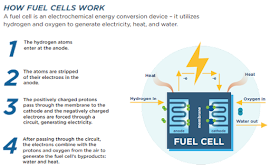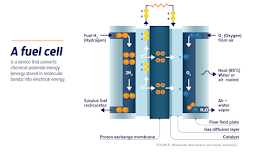Fuel Cell Electric Vehicle (FCEV) Energy Flow Analysis in RealDriving Conditions (RDC)
Abstract: The search for fossil fuels substitutes forces the use of new propulsion technologies applied to means of transportation. Already widesprea…
E-HYDRA's singular goal is to accelerate the clean energy transition by providing zero-emission vehicles with no compromise on power or range, and access to an ecosystem of renewable, affordable hydrogen.
We prioritize renewable hydrogen sources like waste, biogas, RNG, solar, and wind over specific production technologies.
Hydrogen is produced close to dispensing, in alignment with vehicle deployments, reducing the high cost of transporting hydrogen.
We choose production technologies that are economically viable at a small scale during adoption, with the ability to scale modularly as demand grows.
Renewable resources, local production, and scaleable sites reduce costs while maximizing eligibility for incentives and subsidies.
As an industry, transportation was responsible for approximately 26% of worldwide CO2 emissions in 2018. The mandate is clear: we must transition these vehicles to clean energy to protect the planet and future generations. THAT’S WHERE E-HYDRA COMES IN. E Hydra develops zero-emissions, hydrogen-powered commercial rickshaws with leading fuel cell technology. A low-cost, clean hydrogen infrastructure approach synchronizes supply with demand, putting clean rickshaws on the road faster.
To get zero-emission, hydrogen-powered vehicles on the road faster, we need constant innovation in core technologies. Working from the inside out, E-HYDRA's engineers build our proprietary fuel cells from the ground up.
Hydrogen, which is present throughout the cosmos in the highest concentration, powers fuel cell electric vehicles. Hydrogen interacts electrochemically in a fuel cell to create energy that powers the vehicle.
Hydrogen is more energy-efficient & powerful than fossil fuels. The project mainly concerns about saving the fuel, reducing the cost & increasing the torque which increases the overall efficiency of the traditional FCEV.
In contrary to the vehicle architectures of the existing automobiles, fuel cell (hybrid) electric vehicles provide traction power by using a fuel cell as energy converter of chemical energy (mostly hydrogen) into electrical energy based on ionic catalytic breakdown of the molecular fuel at the anode.
Hydrogen is more energy-efficient & powerful than fossil fuels. The project mainly concerns about saving the fuel, reducing the cost & increasing the torque which increases the overall efficiency of the traditional FCEV. An advancement to existing FCEV architecture, is the dynamo system has been added for self charging mechanism. During running condition, when the vehicle is working on Hydrogen, the dynamo attached to the wheels generates power which is feed to the controller & is stored in battery. When all the hydrogen present in the vehicle is utilized, the stored energy in the battery will be utilized for the locomotion. The Hydrogen FCEV auto rickshaw can be brought into the picture for sustaining the daily transport practices by imparting the architectural advancements in the existing system.
Thank you SIEM for supporting us in this project. As we embark on a new phase of growth with your continued support, I want to build a pipeline that fosters building blocks and essential factors that enable E-hydra teams to deliver results faster, better, and more frequently. We truly appreciate your support and we are excited to bring this project to life.
Helpfull Article on FCHEV ( Fule Cell Hybrid Electric Vehicle )
Abstract: The search for fossil fuels substitutes forces the use of new propulsion technologies applied to means of transportation. Already widesprea…
The global hydrogen fuel cells market size is expected to be worth around US$ 131.06 billion by 2030 from at US$ 1.91 billion in 2021, growing at a C…
A fuel cell is a device that generates electricity through an electrochemical reaction, not combustion. In a fuel cell, hydrogen and oxygen are combi…





Please get in touch and our expert support team will answer all your questions.